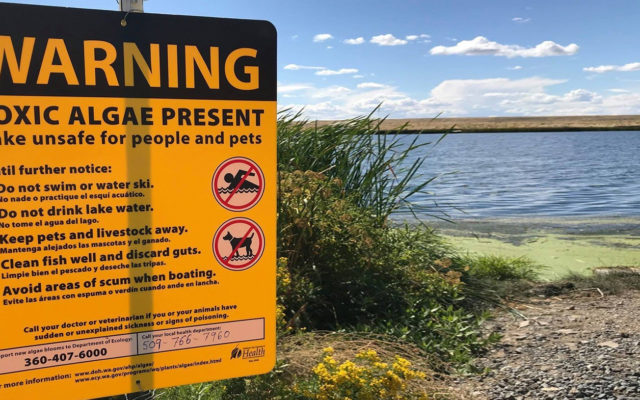Toxic Algae found in Ocean Shores waters

Toxic algae has been found in freshwater within Ocean Shores.
Grays Harbor County Environmental Health Division Director Jeff Nelson issued a statement that test results have confirmed toxin in samples collected from the Grand Canal in Ocean Shores, and with areas of Duck Lake also showing signs of Algal blooms.
A health advisory for all bodies of freshwater in and around the City of Ocean Shores has been issued in response.
“The drier than normal summer likely helped facilitate growth but the return of the wet season should help dissipate the blooms.”
The Heath Division will continue to monitor conditions throughout the next few weeks, although they say that in the meantime they are asking residents and visitors to the area to not recreate in areas of the Canal or lake with algae blooms.
Nelson warns that when you see algae, don’t swim, wade, paddleboard, or fish and keep your pets away from the water, and keep in mind that as wind direction changes, the algae could move elsewhere.
“When in doubt, stay out.”
What are toxic algae?
Toxic algae, also known as cyanobacteria, occur naturally in lakes and other water bodies. They can produce toxins that make people, pets, and animals sick. CLICK HERE to learn more about toxic algae.
How can you spot toxic algae?
Toxic algae can form a scum layer and look like green pea soup. They can also look streaky, be dispersed in the water column, or form clumps. Algae can have different colors, most often green but also brown, red, and blueish. Wind and weather conditions can change the amount and location of algae.
What are the Symptoms?
- Muscle weakness.
- Vomiting.
- Diarrhea.
- Nausea.
See your medical provider if you have come into contact with water and have any of these symptoms. Little children are at most risk since they have small bodies and are likely to ingest water.
Skin contact with toxic algae can cause irritation or a rash. This is a different rash from what Swimmer’s Itch causes.
How can toxic algae affect my pets?
Pets are at great risk. They have small bodies and are more likely to ingest larger amounts of toxic algae. They may drink water with toxic algae and lick their fur. Take your pet to the vet when it shows any of these symptoms.
- Lethargy.
- Vomiting.
- Diarrhea.
- Convulsions.
- Difficulty breathing.
- General weakness.
What should I do if exposed to toxic algae?
You can get sick within minutes to hours of exposure. Rinse off anyone or any pets exposed to toxic algae immediately. Monitor for signs of illness and seek medical treatment if symptoms occur. For exposed pets, keep them from licking their fur to groom.
Can I eat fish from toxic algae contaminated water?
Avoid eating fish from areas with visible algae. Always clean fish well and discard guts.
What should I do if I see an algae bloom?
- Don’t drink lake water.
- Don’t swim or waterski in areas with visible algae.
- Keep pets and livestock away.
When in doubt stay out!
What causes toxic algae?
Toxic algae need light, the right temperature, and nutrients. People can influence the number of nutrients in the water:
- Reduce your use of fertilizer.
- Maintain your septic system.
- Put pet waste into the trash.
Questions? Contact Grays Harbor County Environmental Health at (360) 249-4222 or [email protected].




